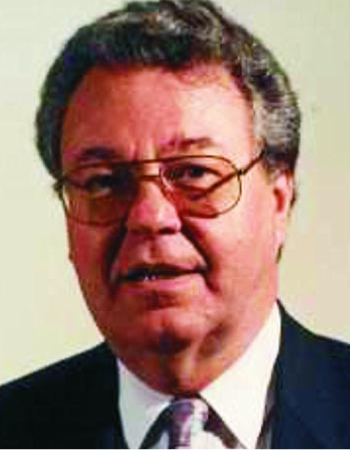ITER Leader to Head CERN
DOI: 10.1063/1.1570766
Given the good impression Robert Aymar made last year as chair of an external review committee for CERN, it’s no surprise he’s been named director general of the European particle physics lab. His five-year term officially begins in January 2004, but throughout this year, he says, he’ll split his time between CERN and the International Thermonuclear Experimental Reactor (ITER), which he currently heads.
Aymar’s committee made a series of recommendations aimed at getting the Large Hadron Collider back on track after the proton—proton collider’s cost was reported to have ballooned by about 30%, to 3.5 billion Swiss francs ($2.6 billion). The recommendations focus on getting the LHC built by 2007—two years late—and paid for by 2010. Most other research activities at the lab are suspended. Before the budget squeeze in 1996, says Aymar, “CERN hadn’t suffered from decreases in manpower and support. It was a surprise to them that those cost cuts were real.” At CERN, he adds, “the culture of science is very good. The culture of cost is not. Changing culture takes time. I will apply the recipe I provided.” (See Physics Today, August 2002, page 26
Five years ago, Aymar was passed over for CERN’s top job in part because he is not a particle physicist. This time, however, the plasma physicist got unanimous backing from CERN’s governing council. Among staff members, the mood is one of cautious optimism. There seems to be an expectation, says Ghislain Roy, an accelerator physicist and an elected member of the CERN staff council, “that, not being tainted by the local culture, [Aymar] will bring a fresh approach, and he will dare to implement change.” CERN’s problems go beyond money, to management, adds Roy, noting that the Aymar report called for broad changes in the management structure. “Will he deliver?”
“What matters at this stage in CERN’s history,” says Luciano Maiani, the lab’s sitting director general, “is that Dr. Aymar has sound scientific judgment and excellent project management skills.” Maiani, who plans to return to teaching and research in theoretical physics at the University of Rome (“La Sapienza”), adds, “the main issue in the coming years will be to not allow scope and program extensions to creep into [the construction of the LHC].” One key to Aymar’s tenure, observers say, is who he names as scientific director.
Aymar’s record in managing large science projects is impressive. From 1977 to 1988, he oversaw the design, construction, and startup of the Tore Supra, a superconducting tokamak at Cadarache in southern France. His LHC connections date back to the early 1990s, when, as head of the sciences of matter directorate in France’s Atomic Energy Agency (CEA), he chaired a committee that assessed the accelerator’s cost and science. In 1994, he took up the mantle of the $5 billion ITER (see the story on page 23 of this issue).
Besides seeing the LHC through to completion and operation, as director general Aymar will be involved in planning life after the LHC. Among the things that need sorting out are what the next accelerator project will be and whether European countries will join directly or via CERN. Says Aymar, “I’ll be looking at ways to keep the cost of the LHC to its present estimate and, at the same time, asking, What is the future?”
Also at the meeting at which Aymar was voted in, CERN’s council introduced an associate membership option, and India was granted observer status.

ITER

More about the Authors
Toni Feder. American Center for Physics, One Physics Ellipse, College Park, Maryland 20740-3842, US . tfeder@aip.org
